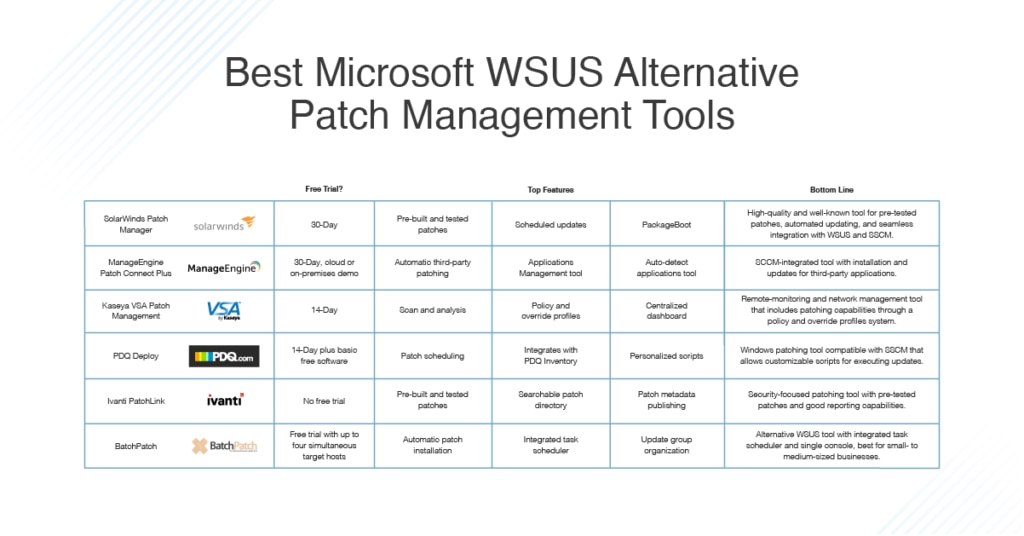
- #Sccm patch deployment best practices pdf
- #Sccm patch deployment best practices install
- #Sccm patch deployment best practices update
- #Sccm patch deployment best practices Patch
- #Sccm patch deployment best practices Offline
b) Select the name, hours interval, recur interval, etc. On schedule or when you initiate the scan manually, the client receives machine policy from the Management point. Start your SCCM console and go to Administration\Site Configuration\Servers and Site
#Sccm patch deployment best practices update
SCCM has a system role called Software Update Point (SUP). In this step, we select “Download software updates from the Internet” and continue. com is my Primary Site with WSUS installed but not configured (I stopped myself just after configuring the WSUS database). Such as WSUS, packages can be created regarding to classification, products, languages of the update (this is not an exhaustive list). When it is set, SCCM can manage updates catalog and binaries to make updates packages. I can see the updates installed and integrated into the image.
#Sccm patch deployment best practices Offline
Copy the files on SCCM server and run again ADK, this time in offline mode.
#Sccm patch deployment best practices install
#Sccm patch deployment best practices Patch
Go to SCCM All software updates and view the patches published using Patch Connect Plus. This role has to be installed on WSUS server. Select the patches to deploy, right click and select deploy.
#Sccm patch deployment best practices pdf
What's included Step-by-step configuration file in PDF format Free updates Ability to purchase future products in pre-sales and discounts Feel free to send us your comment SCCM Software Update Point is mainly used for distributing Microsoft updates but it can also be used to distribute update from other software manufactures. You can then deploy these updates using the existing software update management process.

Start your SCCM console and go to Administration\Site Configuration\Servers and Site A software update point(SUP) integrates with WSUS to provide software updates to SCCM clients. Right-click select Add Site Systems Roles.

Right-click the server on which you wish to install Software Update Point role and click Add Site System Roles. Select the Site System and right click -> Add Site System Roles.


a) Right click on the collection who contain the servers -> Properties -> Maintenance Windows TAB, and select create new (golden star). We have corresponding deployments that we configured this month (the first month we're patching servers with MECM), e.g., Current Month Microsoft Software Updates to Week 3 Servers. We have maintenance windows configured for device collections tied to overnights Tuesday into Wednesday for Weeks 1-4, where each device collection also has a maintenance window in the weeks following their original of the month i.e., in Week 3, there are Maintenance Windows for Week 1, 2, and 3 Servers.


 0 kommentar(er)
0 kommentar(er)
